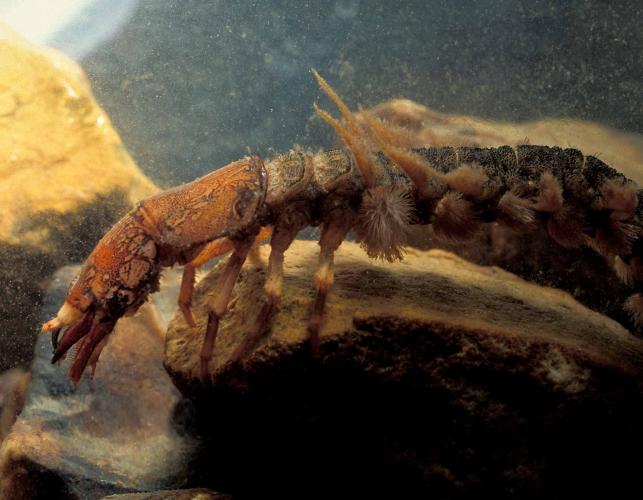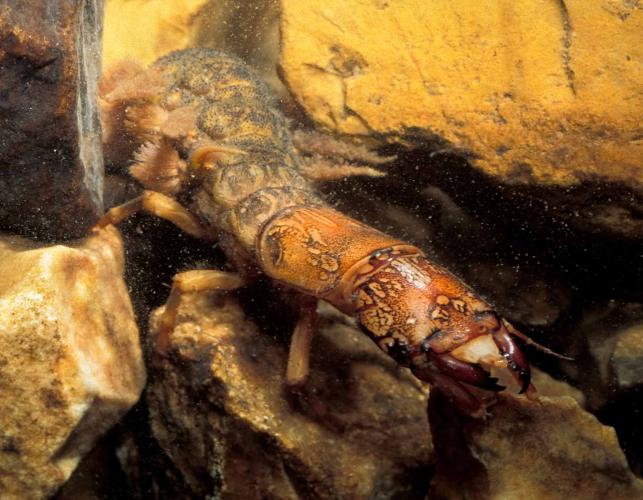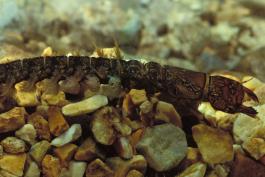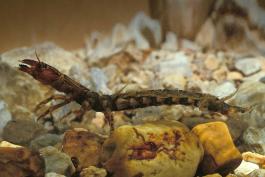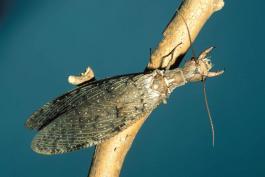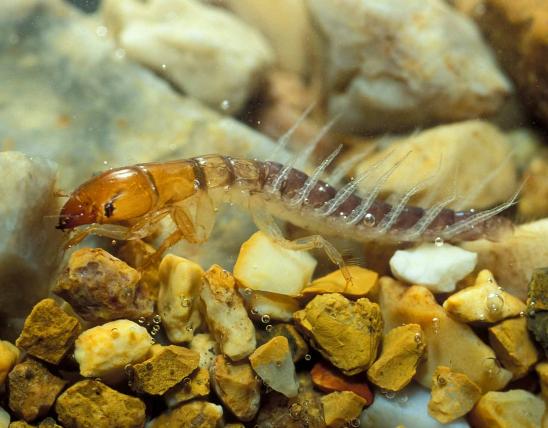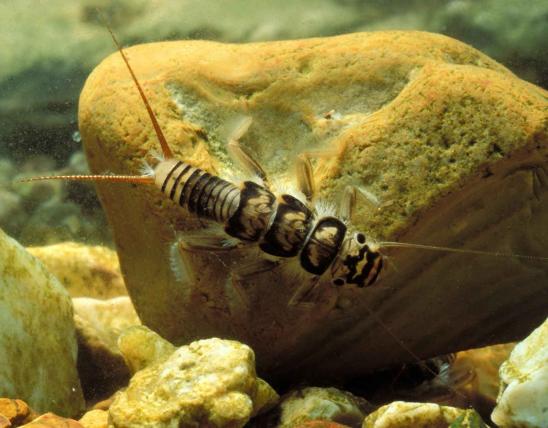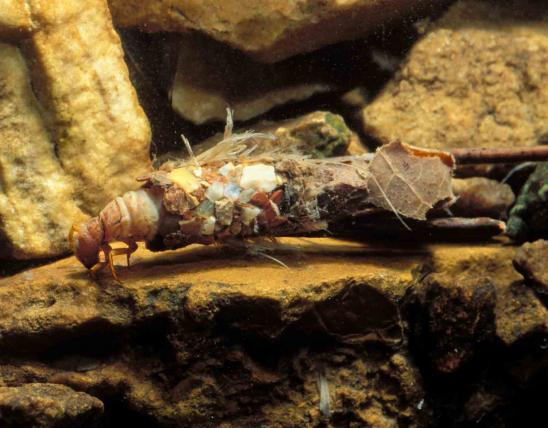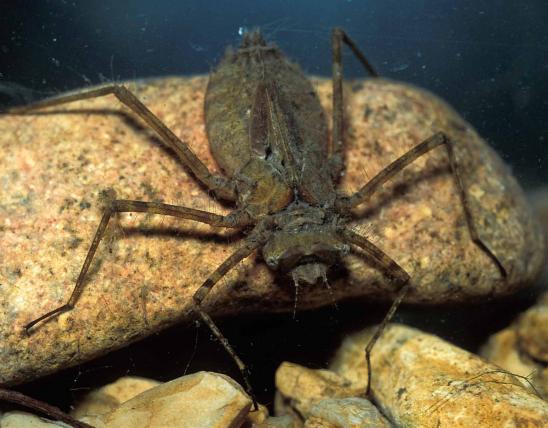
Hellgrammites are the larvae of eastern dobsonflies. They are aquatic, somewhat flattened, and usually some shade of dark brown, tan, or black. Some people think they look like centipedes. The head is equipped with a pair of large, sharp pincers that can deliver a painful bite. The thorax has 3 pairs of legs, each tipped with a tiny pair of pincers. The segmented abdomen has 8 pairs of pointed, leglike appendages along the sides, each with a cottony or hairy gill tuft at the base. There is a pair of hooked, leglike appendages at the hind tip; these help keep the animal from being swept away in the water current.
The winged adults, called dobsonflies, are large, soft bodied, usually a drab gray, black, or brown, with prominent pincers and long antennae. Wings with conspicuous veins, usually folded down the length of the body when at rest. Pincers (mandibles) of females rather stubby and capable of inflicting a painful bite. Mandibles of males very long, tusklike, and incapable of hurting people due to lack of leverage.

Habitat and Conservation
Food
Status
Life Cycle
Human Connections
Ecosystem Connections

